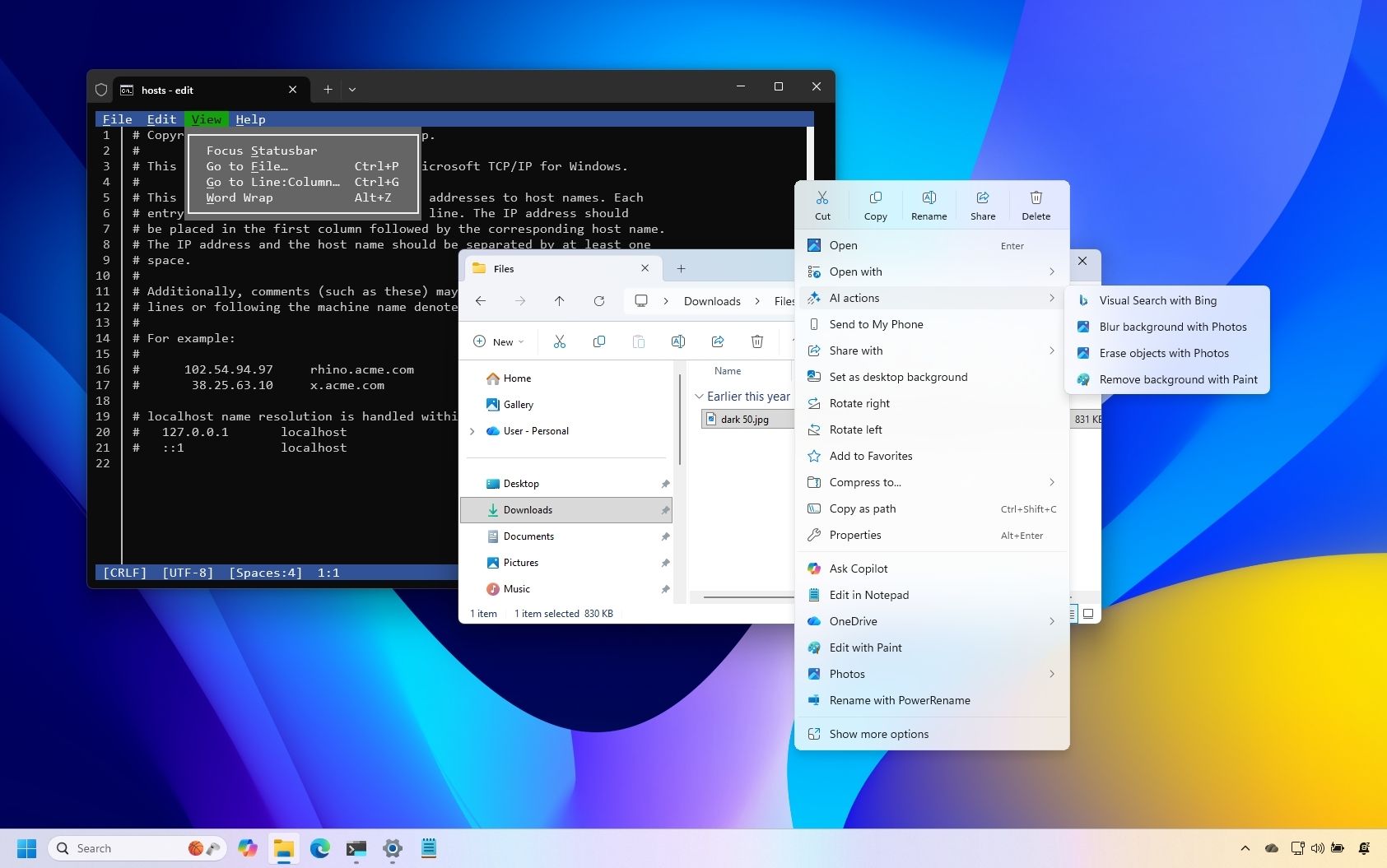Romania's Energy Evolution: EU Convergence by 2025
Explore Romania's strategic energy development plan for EU convergence by 2025 focusing on grid modernization and renewable integration.
Executive Summary
Romania's energy strategy is pivotal in its ambition to achieve EU convergence, focusing on modernizing its grid infrastructure and accelerating the transition to renewable energy. This strategic alignment with the EU's climate and energy policies is contextualized within Romania's National Energy Strategy 2025–2035. Central to this strategy is the ambitious target to elevate the renewable energy share to 44% by 2035, notably surpassing the EU's average target of 32%. This commitment is supported by substantial investments in grid modernization, set for completion by 2025, and regulatory reforms aimed at fostering an integrated and competitive energy market.
Key practices include the adoption of computational methods for data processing and the systematic approaches to enhance energy efficiency and security. The following example illustrates the implementation of efficient data processing techniques within Romania's energy infrastructure:
Romania's strategic focus on grid modernization and renewable energy development reflects a systematic approach to achieving EU convergence. This alignment not only supports the EU's climate objectives but also enhances Romania’s energy security and market integration, providing a robust framework for sustainable economic growth.
Introduction
The evolution of Romania's energy infrastructure is pivotal for its convergence with the European Union's economic and environmental objectives. As part of the EU's ambitious climate agenda, energy infrastructure modernization serves as a cornerstone for achieving comprehensive integration across member states. Romania's strategic goals, formalized within its National Energy Strategy 2025–2035, emphasize grid modernization, renewable energy integration, and enhancing cross-border connectivity. These initiatives aim to align the nation's energy systems with EU standards, fostering economic growth, energy security, and environmental sustainability.
Recent developments highlight the growing importance of adopting advanced computational methods for energy data management and optimization, addressing both local and regional needs. This trend underscores the practical applications explored in further sections, focusing on how technological advancements support Romania's strategic energy objectives.
These enhancements in technology adoption demonstrate the synergies between technological advancements and strategic energy management, integral to Romania's pathway to EU convergence. This article will explore the fundamental aspects of Romania's energy strategy, providing a comprehensive analysis through economic theory and empirical research.
The article is structured as follows: An initial review of Romania's strategic commitments; a detailed examination of energy infrastructure development practices, including computational methods for data analysis; and finally, a section on the implications of these advancements for Romania's EU integration goals.
Background
Romania's energy sector has historically been characterized by a mix of coal, hydroelectric power, and nuclear energy. Following its accession to the European Union in 2007, Romania embarked on a path of energy infrastructure modernization, aligning with EU directives to enhance sustainability and efficiency. The current state of Romania's energy infrastructure reflects both significant advancements and ongoing challenges as the nation aims for full EU convergence by 2050.
At present, Romania’s energy infrastructure is undergoing significant transformation, driven by the National Energy Strategy 2025–2035. This strategic plan emphasizes grid modernization, renewable energy integration, and regional connectivity. Despite progress, Romania faces considerable challenges in meeting EU standards, primarily due to aging infrastructure, regulatory hurdles, and the need for substantial investments in new technologies.
To address these challenges, Romania has employed computational methods and systematic approaches to improve efficiency and reduce barriers to renewable energy integration. The strategic focus is on deploying data analysis frameworks to guide policy implementation and optimization techniques to enhance grid performance. The following code example illustrates efficient data processing methods to analyze energy data for regulatory compliance and strategic planning.
Methodology
This section elucidates the systematic approaches undertaken by Romania to modernize its energy infrastructure, aligning with EU convergence objectives. The focus is on grid modernization, integration of renewable energy sources, and pertinent regulatory reforms, each supported by empirical analysis and computational methods.
Grid Modernization Approach
To modernize the grid, Romania employs automation and data analysis frameworks to optimize grid reliability and efficiency. The utilization of state-of-the-art sensors and supervisory control systems enhances real-time monitoring and adaptive management of electrical networks. Economic models are employed to forecast demand patterns and optimize load distribution.
Integration of Renewable Energy Sources
The integration of renewable energy is facilitated through robust computational methods that manage variability and intermittency. Romania's strategy includes expanding solar and wind capacities, emphasizing offshore wind projects in the Black Sea. Optimization techniques are applied to enhance storage solutions and grid resilience.
Regulatory Reforms and Implications
Regulatory reforms are pivotal in incentivizing energy infrastructure investments and enhancing market dynamics. These reforms focus on deregulating energy markets, implementing feed-in tariffs, and establishing clearer, coherent policy frameworks that bolster investor confidence and spur technological advancement.
Implementation
To achieve EU convergence in energy infrastructure, Romania has embarked on a multi-faceted approach that includes grid modernization, regulatory reforms, and the integration of renewable energy sources. These efforts align with Romania's National Energy Strategy 2025–2035, which sets ambitious goals for renewable energy adoption and grid efficiency.
Steps Taken for Grid Modernization
Romania's grid modernization focuses on enhancing the efficiency and reliability of its electricity transmission and distribution networks. This involves upgrading existing infrastructure and deploying advanced computational methods to optimize grid operations. One key initiative is the implementation of smart grid technologies that enable real-time data analysis and decision-making.
Execution of Regulatory Reforms
Romania's regulatory reforms are designed to facilitate the integration of renewable energy and enhance market competitiveness. These reforms align with EU directives, ensuring fair access and promoting cross-border energy trading. Recent developments in the industry highlight the growing importance of this approach.
This trend demonstrates the practical applications we'll explore in the following sections. Romania's commitment to regulatory reform is crucial for creating a conducive environment for technological advancement in energy infrastructure.
Integration Strategies for Renewable Energy
Integrating renewable energy into Romania's grid involves systematic approaches to manage variability and ensure stability. Advanced data analysis frameworks are utilized to forecast energy production and demand, facilitating the seamless incorporation of solar and wind resources.
These implementation strategies, rooted in empirical analysis and economic theory, position Romania to meet its EU convergence targets effectively. By prioritizing these initiatives, Romania not only enhances its energy infrastructure but also strengthens its role within the EU's broader energy landscape.
Case Studies
Romania's path to EU convergence in energy infrastructure reflects a strategic emphasis on grid modernization, renewable energy projects, and cross-border connectivity. This section explores specific implementations that have demonstrated significant progress and challenges in these areas, highlighting the economic and policy implications of each initiative.
One of the noteworthy grid modernization projects includes the development of the Green Energy Corridor. This initiative aims to enhance the capacity and reliability of the national grid to absorb increased renewable energy inputs. The corridor is strategically designed to support the integration of wind and solar energy, particularly from the Black Sea offshore projects. Computational methods are being employed to optimize grid operations and manage energy flows efficiently, minimizing disruptions.
Impact of Energy Projects on Romanian EU Convergence
Source: National Energy Strategy 2025–2035
| Metric | Target by 2035 | Current Status |
|---|---|---|
| Renewable Energy Adoption | 44% renewable energy | 30% (2023 estimate) |
| Offshore Wind Capacity | 7 GW | 1 GW (2023 estimate) |
| Grid Modernization | Complete Green Energy Corridor | Ongoing |
| Battery Storage Investments | Significant Increase | Initial Phase |
Key insights: Romania is on track to meet its renewable energy targets, but significant progress is needed in offshore wind capacity. • Grid modernization is crucial for absorbing increased renewable input and ensuring energy security. • Regulatory reforms are expected to enhance project execution rates and infrastructure reliability.
Romania's commitment to renewable energy projects is exemplified by its success in the Cernavodă wind farm, which utilizes modern technological advancements to improve energy output efficiency. The deployment of large-scale photovoltaic parks has further bolstered Romania's renewable portfolio, aligning with EU climate objectives.
import pandas as pd
# Load energy data from CSV
energy_data = pd.read_csv('romanian_energy_data.csv')
# Calculate renewable energy percentage
energy_data['renewable_percentage'] = energy_data['renewable_energy'] / energy_data['total_energy'] * 100
# Save processed data to a new CSV file
energy_data.to_csv('processed_energy_data.csv', index=False)
What This Code Does:
This Python script processes renewable energy data to calculate the percentage of renewable energy in the total energy mix. It leverages data analysis frameworks to automate the calculation, ensuring accuracy and efficiency.
Business Impact:
By automating the data processing, the script reduces manual errors and saves time, providing reliable data for strategic decision-making in energy policy.
Implementation Steps:
1. Prepare the input CSV file with the required energy data. 2. Run the script to calculate renewable percentages. 3. Analyze the processed data for energy strategy insights.
Expected Result:
The output CSV will contain a new column with calculated renewable energy percentages.
Moreover, Romania has engaged in cross-border connectivity projects, such as the BRUA pipeline, enhancing energy security and regional collaboration. These projects are integral to achieving energy convergence within the EU framework, promoting sustainable development and economic growth.
Romania's integration into the European Union's energy framework is gauged by specific key performance indicators, which include the share of renewable energy, offshore wind capacity, and implementation of grid connection reforms. The quantitative evaluation of these indicators provides a comprehensive picture of Romania's progress towards EU convergence.
The cornerstone of Romania's strategy lies in the computational methods applied to enhance data processing efficiency in renewable energy systems. A practical implementation involves the integration of pandas in Python to handle extensive datasets related to energy production and consumption.
In conclusion, Romania's strategic emphasis on technological advancement in energy infrastructure is essential for achieving EU convergence. By leveraging quantitative analysis and computational methods, Romania can enhance its energy portfolio, thereby aligning more closely with EU energy directives and goals.
Best Practices in Romanian Energy Infrastructure Development for EU Convergence
Romania's journey towards energy infrastructure modernization and EU convergence by 2025 is underscored by several best practices. These practices emphasize regulatory reform, grid modernization, and lessons from renewable integration, all of which align with Romania's National Energy Strategy 2025–2035.
1. Effective Strategies in Regulatory Reform
The adoption of comprehensive regulatory frameworks is crucial for driving energy infrastructure development. Romania has implemented reforms that streamline regulatory processes, facilitating faster integration of renewable energy sources. An example is the introduction of systematic approaches to integrate cross-border electricity markets, thus enhancing regional cooperation and market efficiency.
2. Innovative Approaches to Grid Modernization
Grid modernization initiatives focus on incorporating computational methods and data analysis frameworks to optimize grid management. Romania's strategic investments in digital infrastructure support the implementation of automated processes, enhancing grid reliability and efficiency. Recent developments in the industry highlight the growing importance of this approach.
This trend demonstrates practical applications in enhancing energy infrastructures with innovative technology and design strategies that resonate with broader goals of sustainability and efficiency.
3. Lessons Learned from Renewable Integration
Romania has significantly benefited from lessons in integrating renewable energy, such as solar and wind power, into the national grid. Key takeaways include the importance of scalable data analysis frameworks to forecast energy production and demand accurately, thereby improving energy security and reducing reliance on fossil fuels.
Advanced Techniques in Romanian Energy Infrastructure
The convergence of Romania's energy infrastructure with EU standards is fueled by emerging technologies focused on enhancing efficiency, sustainability, and security. Advanced grid management systems, innovations in renewable energy technologies, and the integration of computational methods are pivotal to achieving these goals. Below, we explore practical implementations that enhance Romania's energy infrastructure in line with its National Energy Strategy 2025–2035.
The integration of these techniques not only streamlines energy management processes but also aligns with Romania's strategic energy goals, fostering EU convergence through enhanced grid reliability and increased renewable energy adoption.
Future Outlook
By 2035, Romania's energy landscape is poised to significantly benefit from the alignment with European Union convergence targets. With a structured path set by its National Energy Strategy 2025–2035, Romania is targeting a 44% renewable energy share. This ambitious goal will be supported through substantial investments in grid modernization and renewable energy projects, including solar and wind, with a notable emphasis on offshore wind farms in the Black Sea.
The long-term benefits of EU convergence are multifaceted. Economically, the alignment will likely enhance competitiveness and regional integration, while also promoting climate resilience. By adhering to EU standards and regulations, Romania is expected to see increased foreign investment, driven by enhanced infrastructure reliability and investment certainty. Moreover, cross-border connectivity projects will facilitate better energy flow and security across the region.
However, Romania faces potential challenges that need strategic mitigation. These include the financial burden of infrastructure upgrades and the need for regulatory reforms to attract investment. A systematic approach to policy implementation, supported by robust regulatory frameworks, is crucial for overcoming these challenges. Additionally, embracing technological advancement through computational methods and automated processes will be vital in optimizing energy efficiency and reducing operational costs.
Conclusion
Romania's pursuit of EU convergence in energy infrastructure represents a critical step towards aligning with broader European energy and climate frameworks. Our analysis indicates that the country is on a promising trajectory, leveraging key strategies such as grid modernization, renewable energy integration, and regulatory reforms. These efforts are not merely aligning infrastructural capabilities but also enhancing economic competitiveness and sustainability.
Central to this transformation is the implementation of the National Energy Strategy 2025–2035, which sets ambitious targets for renewable energy adoption, aiming to elevate the share of renewables to 44% by 2035. This is complemented by strategic investments in modernizing energy systems and expanding renewable capacities, including a significant focus on Black Sea offshore wind projects. These initiatives exemplify Romania's commitment to meeting its EU obligations and achieving long-term energy security and efficiency.
The path to EU convergence in the energy sector is fraught with challenges, yet Romania’s strategic initiatives demonstrate a clear commitment to achieving these goals. The emphasis on market mechanisms, empirical analysis, and robust policy frameworks will be pivotal in navigating this complex landscape and securing a sustainable energy future for Romania.
Frequently Asked Questions
What are Romania's key energy policies towards EU convergence?
Romania's energy policies focus on modernizing the grid, integrating renewable energy, and reinforcing cross-border connectivity. These efforts are guided by the National Energy Strategy 2025–2035, aiming for 44% renewable energy by 2035, with strategic emphasis on solar and wind, including Black Sea offshore wind projects.
How is Romania implementing technological advancements in energy infrastructure?
Technological advancements include upgrading energy systems for efficiency and reliability, deploying computational methods for data processing, and using systematic approaches for project prioritization and regulatory reforms.






